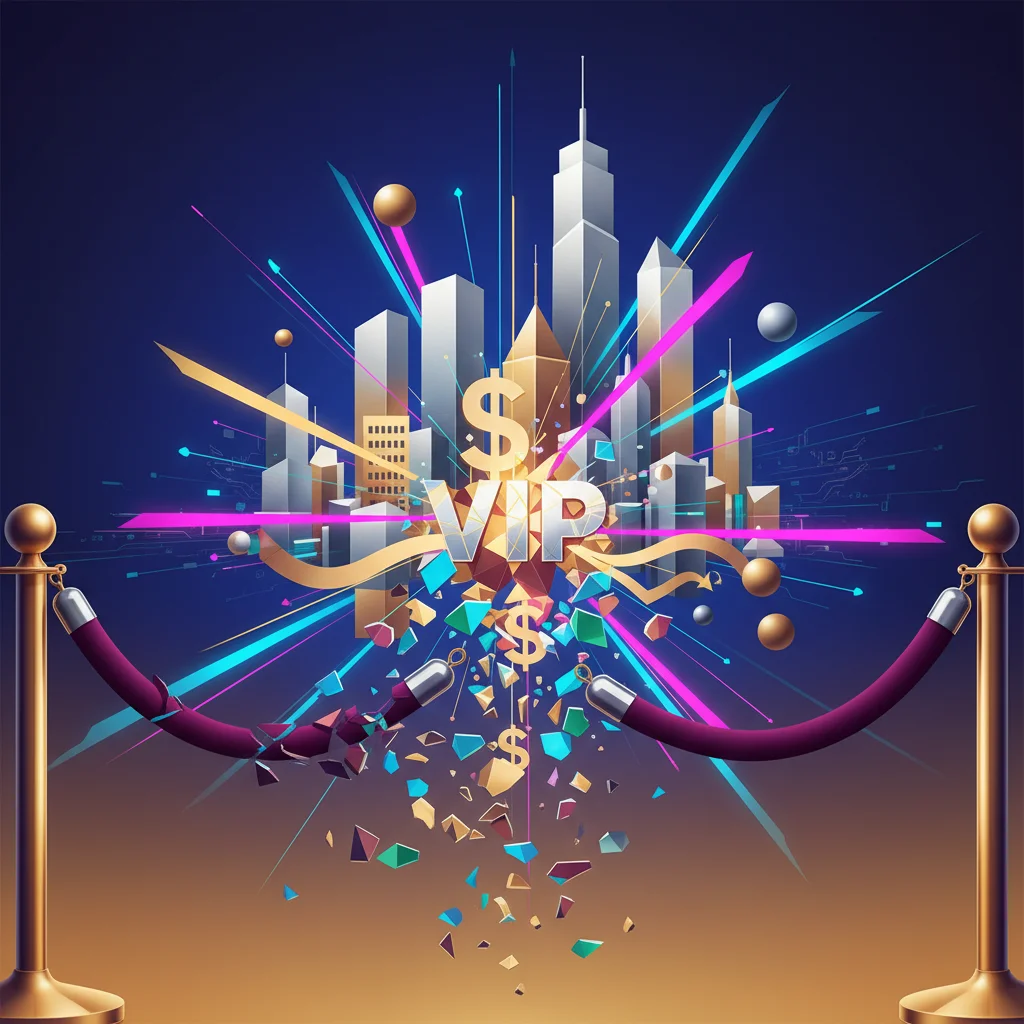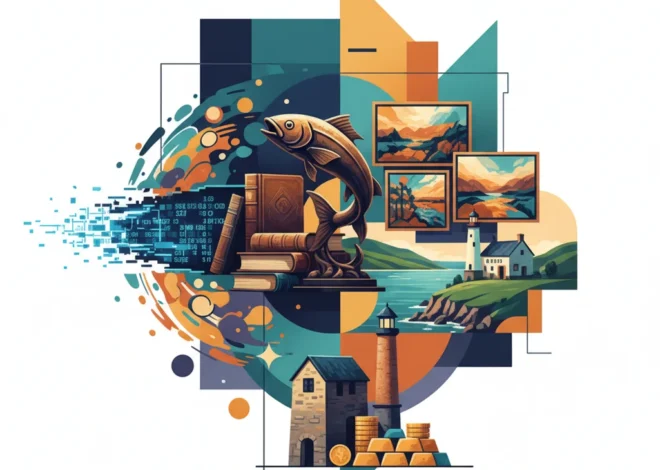
Beyond the Velvet Rope: Why Art Basel’s “VIP” Rebrand Signals a Seismic Shift in Wealth and Investing
For decades, the term “VIP” has been the ultimate symbol of exclusivity. It conjures images of velvet ropes, private lounges, and a world of privilege inaccessible to the masses. Yet, in a move that has sent ripples through the luxury, art, and financial worlds, Art Basel, the titan of international art fairs, has decided to ditch the iconic three-letter acronym. The Swiss art fair group announced that the term has become “empty” and has lost its “gravitas,” a decision that signals a profound shift in how the world’s most influential brands are courting a new generation of the ultra-wealthy.
This is far more than a simple exercise in corporate rebranding. It’s a strategic pivot that reflects deep-seated changes in the global economy, the psychology of wealth, and the very definition of what it means to be exclusive. For investors, finance professionals, and business leaders, Art Basel’s decision is a masterclass in adapting to a new clientele whose values and expectations have been forged in the crucibles of financial technology, disruptive innovation, and a digitally native world.
The Dilution of a Status Symbol
According to Noah Horowitz, Art Basel’s chief executive, the move is a direct response to the term’s oversaturation. “It’s a term that has become so diluted,” he explained in an interview with the Financial Times. “Everybody is a VIP.” From credit card perks to airport lounge access, what was once a hallmark of genuine distinction has become a common marketing gimmick. The “Very Important Person” label has been stripped of its power through ubiquity, rendering it almost meaningless to the very people it was designed to attract.
Art Basel’s primary audience consists of serious individual and museum collectors—a discerning group that values substance over superficial status. The fair’s leadership recognized that the “VIP” title was becoming a distraction, creating a perception of a party atmosphere rather than a premier commercial and cultural event. By abandoning the term, Art Basel is sending a clear message: we are not about fleeting, transactional perks; we are about fostering a deep, enduring community built on a shared passion for art and culture. This is a strategic return to its core mission, focusing on patrons and collectors who are the lifeblood of the art economy.
The New Face of Wealth: From Old Money to the Fintech Generation
At the heart of this strategic shift is the changing demographic of the ultra-high-net-worth individual (UHNWI). The traditional “old money” connoisseur is now joined by a new cohort of collectors who have amassed fortunes in sectors like technology, venture capital, fintech, and cryptocurrency. This new guard of wealth, often younger and more digitally savvy, approaches luxury, status, and investing with a fundamentally different mindset.
While the traditional collector might value provenance and established pedigree, the new collector often seeks innovation, narrative, and experiences. They are less impressed by a velvet rope and more intrigued by an exclusive dinner with an emerging artist or a private lecture from a leading curator. Their wealth was not inherited but actively built, often through sophisticated trading and a deep understanding of modern market dynamics. This background informs their approach to art—viewing it not just as a decorative object, but as a complex and compelling alternative asset class.
To understand this shift, consider the differing values that drive these two groups:
| Attribute | The “Old Guard” Collector | The “New Guard” Collector |
|---|---|---|
| Source of Wealth | Inheritance, traditional industries (manufacturing, real estate) | Technology, finance, fintech, crypto, entrepreneurship |
| Core Values | Tradition, pedigree, social status, discretion | Innovation, authenticity, transparency, community, experience |
| View on Exclusivity | Separation and overt status symbols (“VIP”) | Access to knowledge, people, and unique opportunities |
| Investment Mentality | Preservation of capital, blue-chip assets | Growth, diversification, high-risk/high-reward, passion assets |
| Information Source | Established advisors, auction houses, galleries | Peer networks, data analytics, online platforms, blockchain records |
This new collector is not looking to be passively labeled a “VIP.” They are active participants in the market, seeking intellectual engagement and a sense of belonging to a community of peers. They want to understand the economics of the art world, not just observe it from a champagne-filled lounge.
Art as a Financial Instrument: More Than Just a Pretty Picture
The growing interest from individuals with strong backgrounds in finance has solidified art’s position as a serious alternative asset class. For centuries, art has been a store of value, but today’s sophisticated investors analyze it with the same rigor they might apply to the stock market. According to a 2023 Citi Global Wealth report, the art market is not just about aesthetics; it’s a key component of a diversified investment portfolio, offering potential hedges against inflation and low correlation with traditional financial assets.
Fairs like Art Basel function as crucial hubs in this ecosystem. They are temporary, high-stakes marketplaces that offer:
- Price Discovery: In an often-opaque market, fairs provide a concentrated burst of transactions and data points that help establish market value.
- Liquidity: They bring together a critical mass of buyers and sellers, facilitating transactions that might otherwise take months to arrange.
- Access & Vetting: The fair’s selection committee acts as a gatekeeper, curating the galleries and artists, which provides a level of due diligence for potential buyers.
The rise of blockchain technology and NFTs (Non-Fungible Tokens) in recent years, while volatile, further cemented the connection between the art and tech worlds. It introduced a generation of digitally native investors to the concept of collecting and art’s potential for financial appreciation, as detailed by a report from Deloitte on Art & Finance. While the NFT frenzy has cooled, it permanently altered the landscape, bringing new buyers and a greater focus on digital provenance and ownership verification into the mainstream.
The New Playbook for Exclusivity: Access, Knowledge, and Community
If “VIP” is dead, what replaces it? Art Basel’s new strategy offers a blueprint for the future of luxury marketing. The focus is shifting from a passive label to an active, value-driven relationship. The new pillars of exclusivity are:
- Access: Not just entry through a special door, but meaningful access to the creators and experts who define the industry. This means private walkthroughs with curators, studio visits with artists, and intimate conversations with seasoned collectors. It’s about getting behind the scenes, not just into a secluded section.
- Knowledge: The new wealthy are voracious learners. They want to understand the context, the history, and the market mechanics of their passions. Art Basel is leaning into this by offering more educational programming, expert talks, and content that empowers collectors to make more informed decisions. This transforms the relationship from purely transactional to educational and advisory.
- Community: Perhaps the most important element is the creation of a genuine peer network. The new approach aims to connect like-minded individuals who share a passion, allowing for the exchange of ideas and the building of relationships. It’s about curating a community, not just managing a guest list. This sense of belonging is a far more powerful and enduring motivator than a temporary status symbol.
This playbook is not unique to the art world. We see parallel shifts in wealth management, where private banking is moving beyond mere investment management to offer holistic lifestyle services and exclusive networking opportunities. It’s a recognition that for today’s elite, time and knowledge are the ultimate luxuries, and community is the ultimate currency.
Conclusion: A Lesson in Brand Evolution
Art Basel’s decision to retire the “VIP” title is a landmark moment. It’s a public acknowledgment that the language of luxury and the values of the wealthy have irrevocably changed. The move demonstrates a keen understanding of a new client base that rejects empty status symbols in favor of authentic engagement, intellectual substance, and meaningful community.
For anyone operating in the high-end market, or for any investor tracking the health of the luxury sector, this is a crucial case study. It underscores the need for brands to look beyond the velvet rope and ask themselves what true value they are providing to their most important clients. In an increasingly transparent and interconnected world, the old signifiers of exclusivity are losing their power. The future belongs to those who can build a community, share knowledge, and offer access not just to a private room, but to a richer, more meaningful world.


